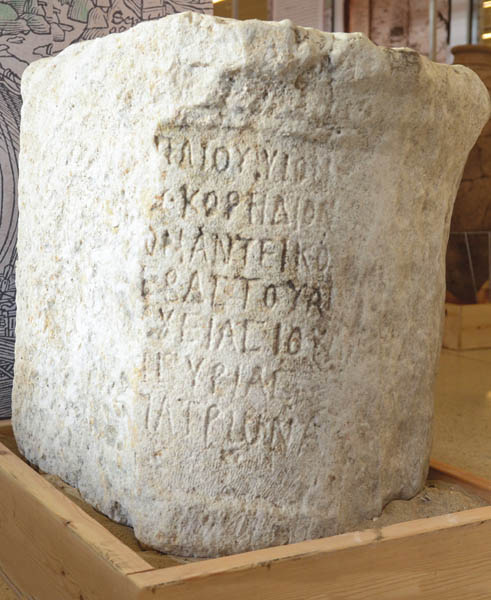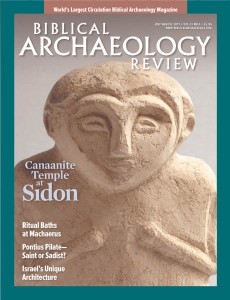Strata: Inscription of Judea’s Roman Governor Surfaces

Who was the Roman governor of Judea during the time leading up to the Bar-Kokhba Revolt, the second Jewish revolt against Rome (132–136 C.E.)? This question has now been answered thanks to an inscribed stone block recently discovered off the coast of Tel Dor in northern Israel.
The enormous block was first observed under water in the Dor Nature Reserve by research students Ehud Arkin-Shalev and Michelle Kreisher from the Coastal Archaeology and Underwater Survey Lab at the University of Haifa. The significance of the block was evident because it bore an ancient inscription, and authorities determined that it must be extracted from the waters. Assaf Yasur-Landau, a professor in the Department of Maritime Civilizations at Haifa, headed the underwater excavation to bring the stone to dry land for study and conservation.
Gil Gambash, Chair of the Department of Maritime Civilizations at Haifa, is in the process of deciphering the Greek inscription on the massive 0.7-ton, 2.8-feet-high stone. The inscription was reconstructed to read: “The City of Dor honors Marcus Paccius, son of Publius, Silvanus Quintus Coredius Gallus Gargilius Antiquus, governor of the province of Judea, as well as […] of the province of Syria, and patron of the city of Dor.”
Interestingly, the governor named on the stone, Gargilius Antiquus, is known from one other inscription found at Tel Dor in 1948. Missing from the 1948 inscription is the name of the province over which he governed, which scholars have debated was Syria or Judea. The discovery of the inscribed stone off the waters of Dor confirms that Gargilius Antiquus was governor of Judea.
Already a library member? Log in here.
Institution user? Log in with your IP address.

